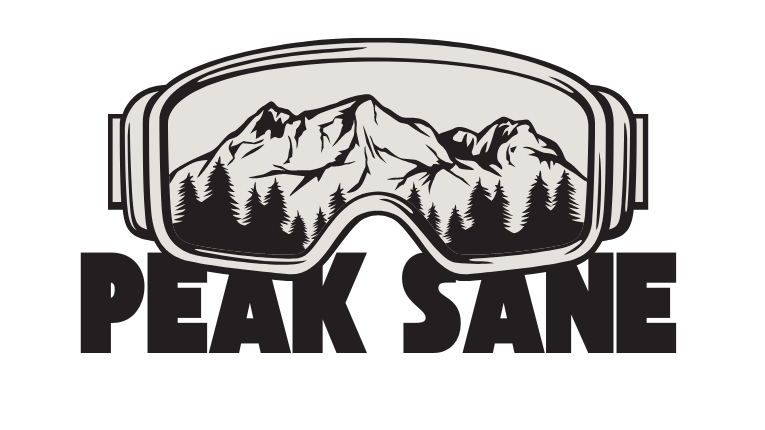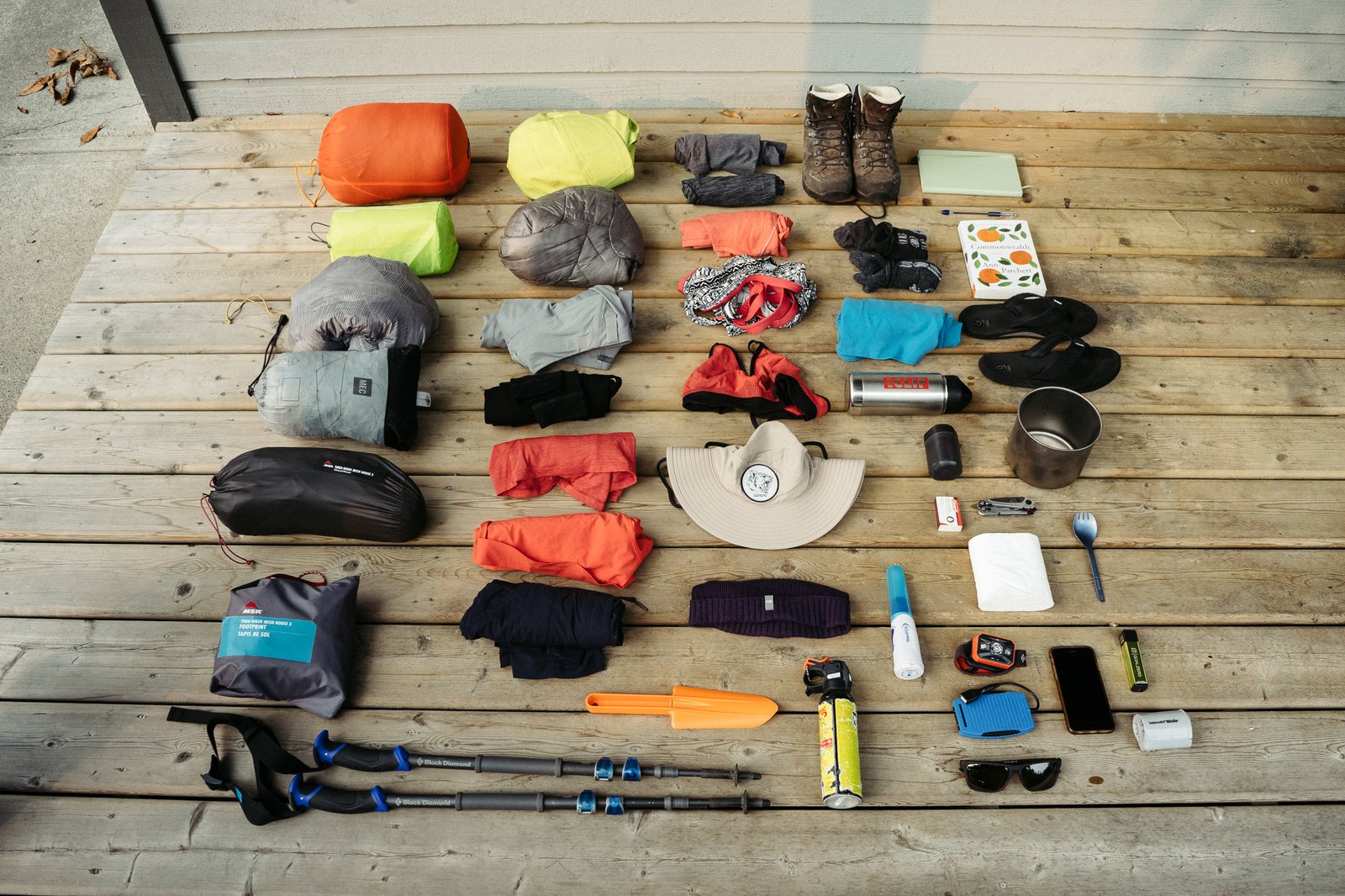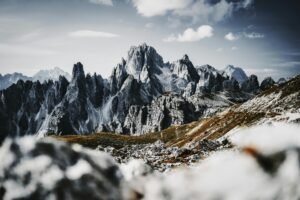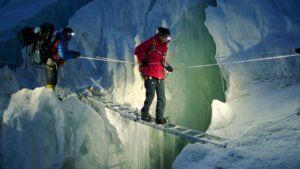Multi-Day Mountaineering Packing List: Gear, Food Essentials
There is much more to it than chucking gear in a pack if you are preparing for a multi-day mountaineering expedition. If you take my 20 years of mountain experience seriously, an efficient hiking backpack is a 50/50 part of the success when heading into the wild. What you take with you makes the difference between an enjoyable adventure or a miserable experience so follow some guidelines to ensure your survival if things go awry. Having the proper gear will help you move through difficult terrain, the right food will keep you going and essentials will keep you safe and entertained in the unknown.
In this post, we will talk about what to pack for a multi-day mountaineering trip; I am breaking it down into essential gear, the kind of food you might want to take with you, and extra things that can come in handy. Whether you are getting ready for a technical climb in the Alps or an extended hike through the Rockies, these tips will help you to pack like a mountaineer.
1. How to Pick the Perfect Backpack for Your Multi-Day Mountaineering Trip
Backpack —Glacier National Park Credit: Kyle S Follow us to get involved in future contests by tagging @rei and including #FindOutdoors Choose a comfortable, capacious backpack that is the right kind for alpine hikes.
Key Backpack Features:
Size: A multi-day pack for mountaineering ideally in the 50 to 70 liter range Anything smaller and your gear may not fit, while anything larger is going to be unnecessarily bulky.
Fit and Comfort -Having a well-fitted backpack is key. Find one with adjustable straps, a hip belt and padded shoulder straps to ensure the weight is distributed properly. Try a fully loaded pack BEFORE you leave for your trip to make sure its comfortable.
So, make sure your pack is made of durable, weather-proof materials that will be able to withstand the elements and last you many years. Some backpacks come with their own built-in rain cover or you can buy one separately.
Lashing Points: for climbing, you will want loops or webbing to lash on ice axes, trekking poles, crampons and a helmet some times.
2. Essential Mountaineering Gear
It’s rugged terrain, usually snowy or icy, so you have to make sure your gear can withstand the elements. If you want to embark on a multi-day the below items are required for safety and direction.
Clothing
The general rule of thumb when it comes to dressing for the mountains is layering; we do not all work at the same temperature, and what one person feels comfortable in will obviously be different to another. Cover all the following attire:
First Layer (Wicking): Your first layer should purposefully pull sweat away from your body to keep your skin dry. Choose to Always wear light weight and synthetic or good old merino wool clothing that breathes.
Mid Layer (Insulation): A fleece or lightweight down jacket is ideal insulating these return to the ambiance.emplace heat when it’s cold. For warmer climates, go with a down or synthetic shell.
Top Layer (Weather Protection): You can’t be in snow, rain or wind without a water-proof, wind-resistant jacket and pants. You can do this with a Gore-Tex or some other breathable material.
Climbing Pants: Lightweight, flexible and water resistant (for lower altitudes) pants are best for striding lower, while warmer insulated pants may be required where higher.
Gloves: = two pairs 1. lightweight gloves for dexterity 2. thicker insulated gloves for cold conditions
On your head: Whether it is a beanie, balaclava, buff or all three,) to keep those domes warm. Do not by any means forget sunglasses with UV protection, if only to prevent ephemeral snow glare for you daredevil ski bunnies.
Footwear
Key to Your Mountaineering Success: Footwear
Mountaineering Boots: Durable and waterproof and can use crampons. If you are climbing during many hours of the cold, the use of insulated boots will at least protect your toes against frostbite.
Gaiters: Nothing is worse than wearing snow or debris that have gotten into your boots. A good pair of gaiters will keep this stuff OUT! Choose a gaiter that fits around your lower leg and goes up over the top of your boot with traditionally nylon loops/hooks or newer plastic hooks to attach the front and back sides together; dejtingsidaalicantePenguins like my Gallaz G-word model) act effectively at keeping crud out while cruising through snowy and dirty landscapes.
CramponsMetal spikes that attach to your boots for better traction across snow and ice. Watch next: 9 Best MIDI Keyboards
Socks:Pack multiple pairs of wool/synthetic mountaineering socks Just make sure they are moisture-wicking, cushioned and warm.
Technical Climbing Gear
For technical mountaineering routes, you will also require:
Ice Axe: A standard mountaineering ice axe when hiking on steep terrain to support you with self-arrest and balance. Don’t do the first-time use in the wild 🙂
Helmet: Helmets available to protect from falling rocks, ice, or gear-guide helmet It should be comfortable to wear and breathe in.
Harness + Carabiners: If you will be spending a lot of time on glaciers or traveling by car, a simple harness with some locking carabiners is in order.
Glacier travel, crevasse rescue or rappelling: Depending on the nature and difficulty of your route, you’ll need dynamic ropes.
Hiking Poles — Use to help with balance when going up or down steep areas, and relieve pressure off your knees on ascends and descents.
Navigation Tools
Map and Compass: Even though GPS devices are very convenient, never rely on just a gadget alone. But having a map and compass to fall back on are pretty much necessities, especially on longer routes like the ones I did.
GPS Device or Phone: GPS devices like a Satellite Communicator ( SPOT, Delorme inReach SE ), and / or navigation apps such as GaiaGPS can go a long way here be sure any batteries are topped up since cold weather kills them.
These are noticably heavier then my other recommendations.The home screen provides pretty much the same information as a submariner plus local elevation(from the barometric altimeter).
3. Shelter and Sleeping Systems
A cozy sleeping arrangement is your best friend with this multi-day mountaineering kit. Here’s what you’ll need:
Tent
Opt for a 4-season tent that can be used in alpine conditions. It should be light, nevertheless it ought to first the assessment of time including the best typhoon, weighty snowstorm and below zero temperatures. Here are those features to look for:
Double-wall construction: Adds insulation and moisture protection.
Ventilation: Microsoft being stodgy doesn’t allow condinsation-building up in there.
Snow bomb proof: If camping in snow be sure that your tent has bomber guy lines and a snow skirt to add even more stability.
Sleeping Bag
In the mountains, a good sleeping bag rated for sub-freezing temperatures is pretty much mandatory. Down comes with an impressive warmth-to-weight ratio, which is why so many prefer a down-filled bag—or quilt—but remember that down does not perform well when wet. Synthetic, because they are cheaper and insulate when wet (but that wet insulation can be heavy).
If you anticipate the temperature to be significantly colder than that, look for bags rated around -10°C (14°F) or lower. Mummy-style bags — those that taper at the feet — retain heat better than rectangular models.
Sleeping Pad
The other function of a sleeping pad is to keep you from losing heat through contact with the cold ground. For cold temperatures, an inflatable pad along with a closed-cell foam mat gives the best protection from heat loss by preventing contact with the ground.
4. Multi-Day Mountaineering Food and Nutrition
Not only are you burning a LOT of calories mountaineering, your body needs plenty of energy to keep going, so you need the best types of food to pack with you. Just make sure whatever you take is lightweight, high-calorie, and dense in nutrients that can be prepared easily.
Breakfast Ideas
Convenient lightweight option – add boiling water and ready in minutes. Mix in nuts, dried fruits, or some protein powder for an added energy punch.
Granola & Muesli: whether you buy packed ones, or homemade; granola is a calorie-dense breakfast choice.
Energy Bars: Energy packed bars to grab on the go! with Protein, Fats and Carbohydrates!
Lunch and Snacks
Dried Fruit and Nuts: A handful of nuts, along with some dried fruit is a centuries-old snackTrail Mix – nuts, dried fruit and chocolate — the classic high calorie fare.
You can find other energy bars and gels that are practical, especially on the climbs.
Hard Cheeses and Jerky: A great portable protein option that is ideal for longer trips.
Peanut Butter and Nut Butters: High in calories, great spread on crackers or tortillas.
Dinner Options
Freeze-Dried Meals: Freeze-dried meals are ultra-lightweight and simple to make, making them perfect for extended trekking trips. Simply add boiling water and you have a hot meal in minutes.
Instant rice, pasta or couscous: Quick-cooking grains which are ideal as a base for meals. Next, dump in some dehydrated vegetables along with a packet or two of tuna or chicken and you have yourself a meal.
Warm and hearty, soups and stews are great for comfort food on cooler evenings at higher elevations. Dehydrated765ools
Hydration
Water is hard to come by at high altitudes. Carry over two liters of water and a light weight water filter or additives to make the stream or lake drinkable. Pack Electrolyte tablets or powder to support salt replenishment and maintain energy levels.
5. First Aid and Emergency Gear
Safety is key to mountaineering, and requires preparation for emergencies.
First Aid Kit
An introductory straightforward first aid kit must incorporate:
If you have any cuts or blisters, take along some band-aids, gauze pads and medical tape.
Antiseptic wipes or ointment.
Painrelievers: Ibuprofen or acetaminophen.
Any personal medications.
Blister treatment including moleskin or blister pads.
Of tweezers, shears and safety pins.
Emergency Gear
Headlamp: Carry a lightweight headlamp and some extra batteries.
Emergency Shelter — An emergency bivy or space blanket is critical, if you can’t setup your tent and in the need to immediate shelter.
Firestarter: In a cold or snowy environment, you need to carry matches, a lighter or fire starting kit for emergencies.
Whistle and Signaling Device- A whistle will alert searchers to your location should you be lost, also in the kit a is a signal mirror for use during daylight.
Repair Kit
In addition you will likely need, duct tape, zip ties, a multi-tool and items specific for the gear that you own such as patch materials to repair your sleeping pad or tent.
6. Personal Items and Extras
And, lastly, a few personal and extra items to help with the experience:
Sunscreen And Lip Balm: The sun is brutal at high altitudes, so carry high-SPF sunscreen and chapped protection lip balm with you to keep your skin safe.
Toiletries: Toothbrush -toothpaste (2.oz), biodegradable soap and toilet paper Place all toilet paper used into resealable bags and take it away from the site to have less effect on the environment.
Camera or GoPro — Get good pictures of all the beautiful sights you´ll see along the way!
Notebook: Keep notes of your adventure or perhaps record essential data as you go along.
In conclusion: Pack safe, Hike hard
The activity can be physically and mentally challenging, so if you want to enjoy the experience without having issues (safety or discomfort wise) make sure that you pack wisely. With planning to pack, the right gear and focus on food, shelter and first aid; you will be set for multi-day mountaineering.
Remember, efficiency is key. Each item you pack should have a purpose, so you need to be prepared enough for your safety and comfort with certain gear while not weighing yourself down too much which could make meeting your daily goals more difficult. From climbing your first peak to getting ready for a month-long expedition, these packing tips will have you covered. Happy climbing!




